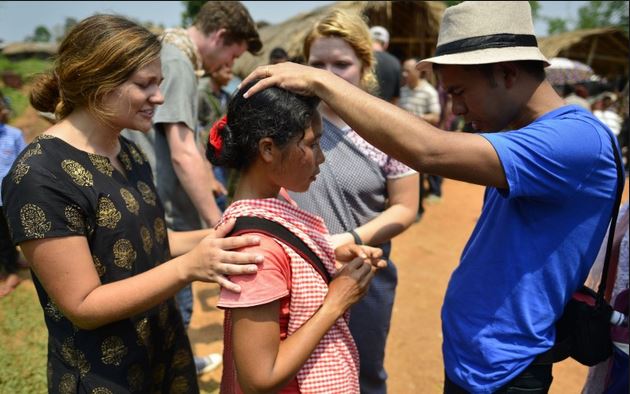“Christian Missionary” as the name suggests have been on a mission for conversion. For decades they have been aware of the fact that Hindu India has been a very tough nut to crack, because of its deep philosophical roots, strong families and time honored traditions, evangelical efforts have been met with great resistance. But the Church has found a weak spot in the tribals, backward castes and northeastern states of India. Historically they have lacked complete social acceptance and their sense of innocence and hospitality has made them an easy prey.
Politician’s fearing backlash and anger from these preachers are unable to defend the need for continuation of a law to ban religious conversions that occur through inducements and coercion.
Though Christian evangelism is active throughout India, the larger populations of Christians are in a few well-defined pockets. Of 2.78 crore Christians counted in 2011, 1.1 crore are in the two States of Kerala and Tamil Nadu; there are another 26 lakh of them in the western coastal States of Karnataka, Goa and Maharashtra. Thus nearly half of all Christians in India are concentrated mainly on the western coast. There are also 37 lakh Christians in the central Indian States of Jharkhand, Odisha and Chhattisgarh and in the neighboring districts of West Bengal. This region has long been a particular target of Christian evangelization because of its large tribal population.
Outside these major regions of Christian concentration, the States that stand out for considerable Christian presence are Punjab, where Christian evangelization achieved an early success in one particular Scheduled Caste community and Andhra Pradesh, where Christians seem to have achieved a foothold among the Scheduled Castes in the recent past. In 2011, 11.3 lakh Christians have been counted in Andhra Pradesh. There are 3.5 lakh Christians in the relatively small State of Punjab. The number of Christians elsewhere is small, though they have a considerable share of 21.3 percent in the population of Andaman and Nicobar Islands as a whole and of 70.9 percent in the Nicobar Islands.
After this, their next largest concentration is in the Northeast (including Assam); the eight States of the region accommodate 78 lakh Christians, forming 28 percent of the total population. Northeast comprises of eight states namely Arunachal Pradesh, Assam, Meghalaya, Manipur, Mizoram, Nagaland, Sikkim and Tripura.
The phenomena of conversion in these regions primarily started in 30’s before the independence of India. The British government handed over the responsibility and the budget for school education to these Christian missions.
The onslaught of missionaries can be seen in the above stats.
While there is even a rumor on “Ghar Wapasi” certain sections of media and “sickular” parties start working overtime, but then no one cares or dares to analyze or make a documentary or do a sting or file a PIL on these conversions by missionaries for decades.
Conversion by religious mind is fine but conversion by allurement, coercion and inducement is a problem and against the law of the land. Imagine you are poor and living in a rural or a tribal region and your child gets sick, you managed to bring him to the hospital and the doctors say he can cured, but the cost of treatment is just beyond your reach and you are stuck. From nowhere I come and offer you an option that I will pay your expense and the treatment will be free of charge for you, but you will have to renounce your centuries old traditions and convert to a foreign religion. This is allurement.
The mother is sick and father loses his source of income and can’t feed his family. Well, say the missionaries try praying to your Hindu gods. Hmmm, imagine nothing changes. Well then, see what happens if you pray to Jesus. Wow! The mother receives medicine. The father gets a one-day job that puts rice on the table. If one prayer to Jesus produces miracles like those, imagine what converting will do. People being told that their misfortune derives from their worship of Hindu deities, because the idols are really forms of the Devil, about village strongmen being paid to coerce conversions from other villagers, about women given a choice of walking a mile to haul water from their usual source or using the new well conveniently dug in front of a church.
The price? Conversion, of course. Targeting mainly the impoverished and uneducated.
The large spread of Christianity that has occurred in the Northeast in the decades preceding and following Independence was to a large extent a consequence of the Church adopting the role of inspiring and leading the various movements of militant assertion of sub-national identities which began in the region with the advent of Independence.
Christianization of the Northeast, thus, seems to be at least partly, if not largely, a result of political and strategic considerations. It certainly is not an entirely religious phenomenon.
Data Source: Centre for Policy Studies (CPS)
